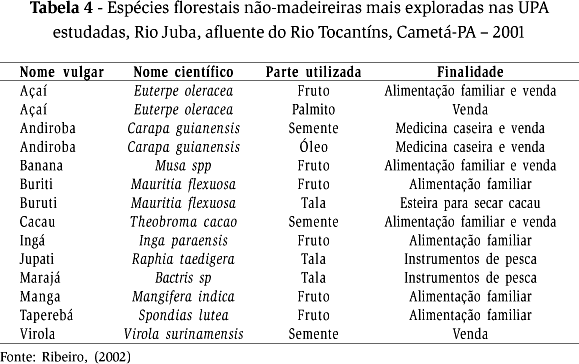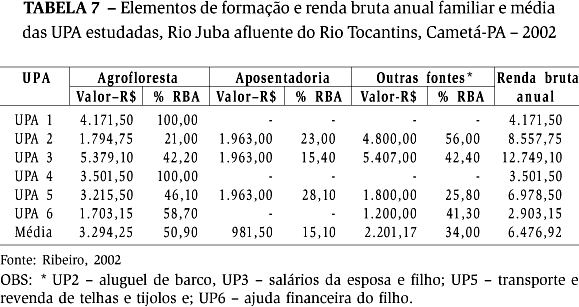The purpose of this paper is to identify and characterize forestry and socio-economic systems of tidal river floodplain utilization in agroforestry production units (UPA). Forest inventory techniques, budget sheets and questionnaires were utilized. The results obtained express an average floristic composition of 2,920.7 plants/ha, with a breast-high circumference (CHC)>10cm, the highest frequency being for açaí (Euterpe oleracea) (50.63%), cocoa (Theobroma cacau) (31.02%) and virola (Virola surinamensis) (6.76%). The system comprises timber and non-timber forest exploitation, fishing, and poultry and swine raising. The annual cost of the agroforestry system (SAF) is R$1,866.25/UPA and annual gross income is R$2,959.08/UPA. It was concluded that the system is an agro-silvi-pastoral one, where poultry and swine raising utilizes floodplain shellfish as feed source; in principle, the technology used is favorable to the ecosystem conservation; however, there is a need for improving the quality of family labor. The SAF annual gross income demonstrates the economic feasibility of the UPAs at a minimum wage level; however, such units are multi-functional and have multiple incomes whose non-agricultural earnings are fundamental to families persevering in this activity and staying in the rural environment.
Family agriculture; Amazonia; floodplain socioeconomy








